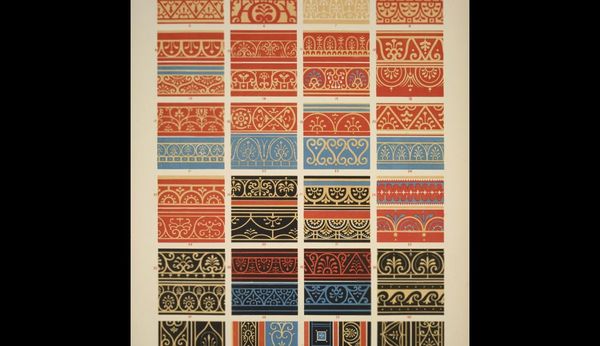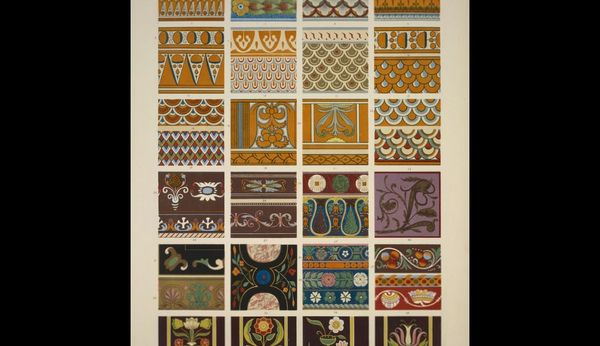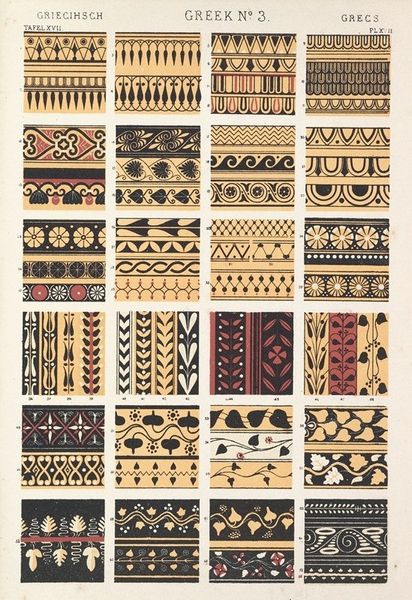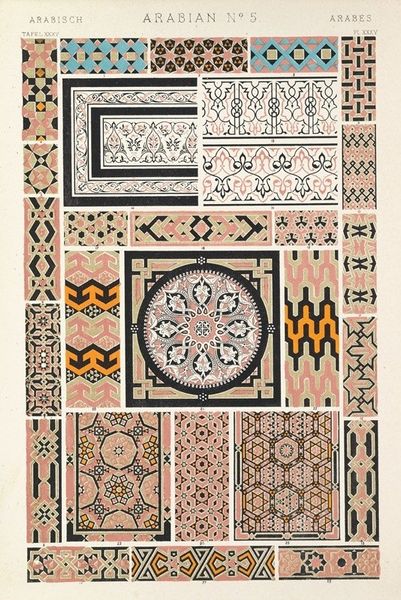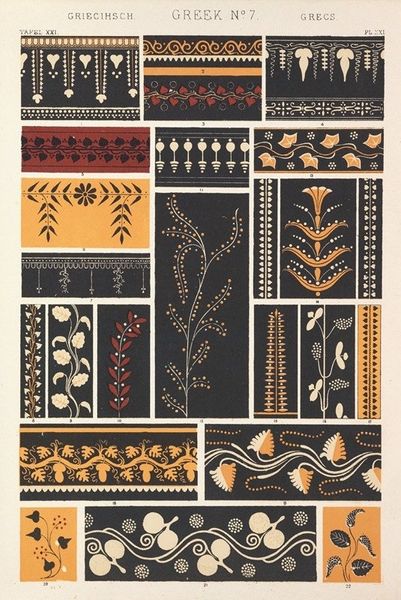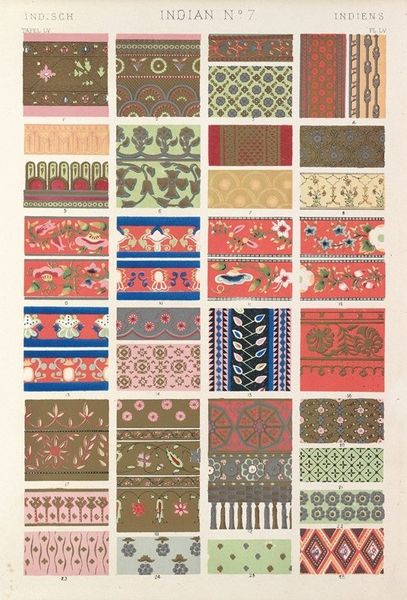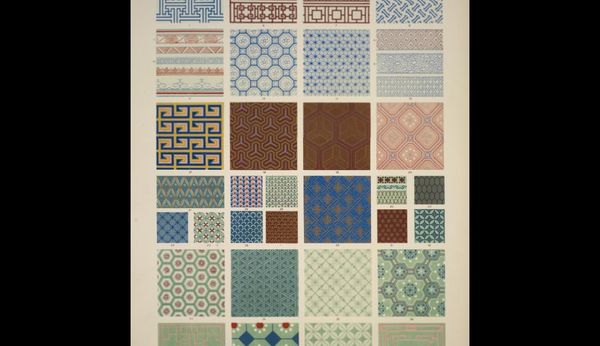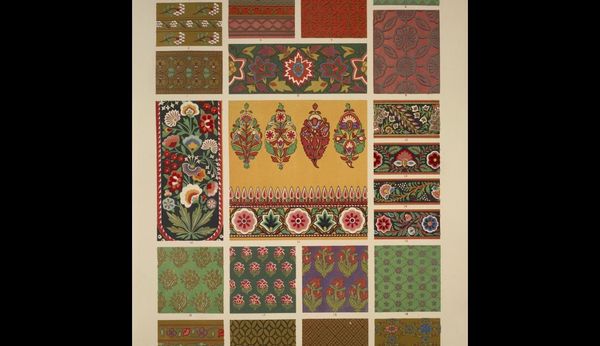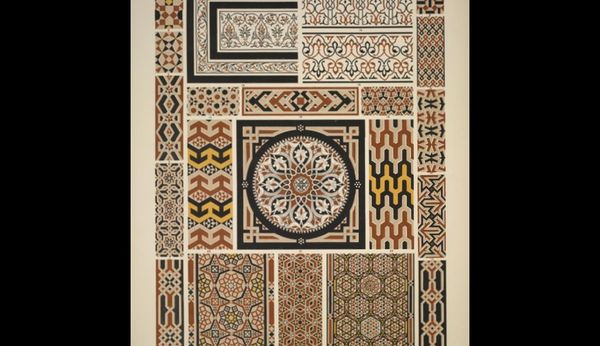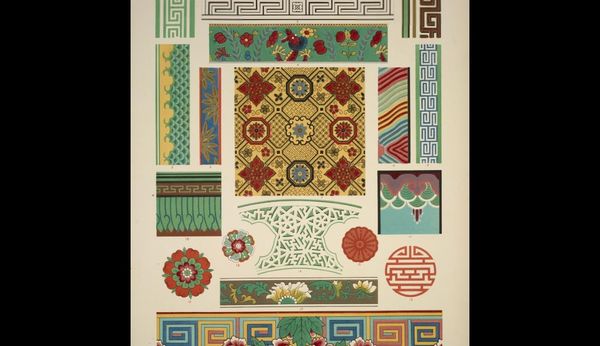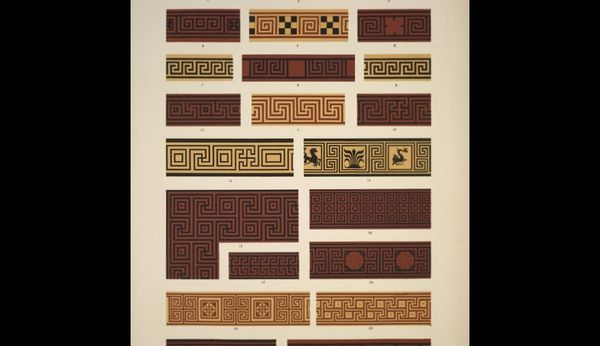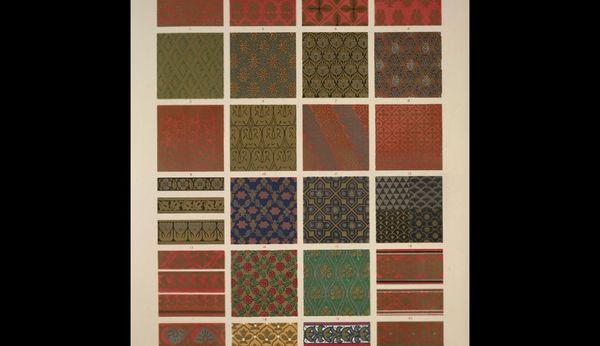
drawing, graphic-art, textile
#
pattern heavy
#
drawing
#
graphic-art
#
natural stone pattern
#
loose pattern
#
man-made pattern
#
pattern
#
asian-art
#
textile
#
text
#
geometric pattern
#
organic pattern
#
geometric
#
repetition of pattern
#
vertical pattern
#
line
#
pattern repetition
#
decorative-art
#
layered pattern
Copyright: Public domain
Editor: Here we have an intricate collection of designs titled "Savage tribes, no. 1," it seems to be graphic art, perhaps a drawing. It gives me the sense of a historical reference book of textiles or patterns. What strikes you when you look at this piece? Curator: The title is jarring isn't it? "Savage Tribes," such loaded words immediately spark a reflection on how cultures have been perceived and misrepresented throughout history. The designs themselves, though presented as specimens, speak of sophisticated visual languages. Notice how geometric abstraction blends with what appears like stylized natural forms. Editor: It's like a survey of patterns, but categorized under that outdated title. It definitely feels problematic now. Curator: Precisely. Think about how symbols function within a community – they can carry history, beliefs, and social structures. These aren't just decorations, are they? Editor: No, I see that. They feel… communicative, like each motif holds a specific meaning. Is that cultural memory you mentioned? Curator: Absolutely. We can consider how these repeating patterns reflect the values and priorities of their origins. Even the act of repetition itself is symbolic of cultural continuity and collective identity, generation after generation. What happens when such symbolic expression is extracted from its original cultural context and presented as "savage"? Editor: It strips away all that meaning, doesn’t it? Turning cultural expression into just a visual artifact. I hadn't considered the title as a tool for erasing meaning. Curator: Indeed. It also perpetuates a dangerous narrative of otherness. Hopefully, understanding the underlying language of images allows us to question these old narratives and cultivate respect. Editor: This really shifted my perspective. Seeing how easily images can be divorced from their original meaning is a crucial insight. Curator: I agree. Now when we encounter cultural objects, we have to be critical. We need to see past superficial labels and delve deeper into the narratives they represent.
Comments
No comments
Be the first to comment and join the conversation on the ultimate creative platform.
